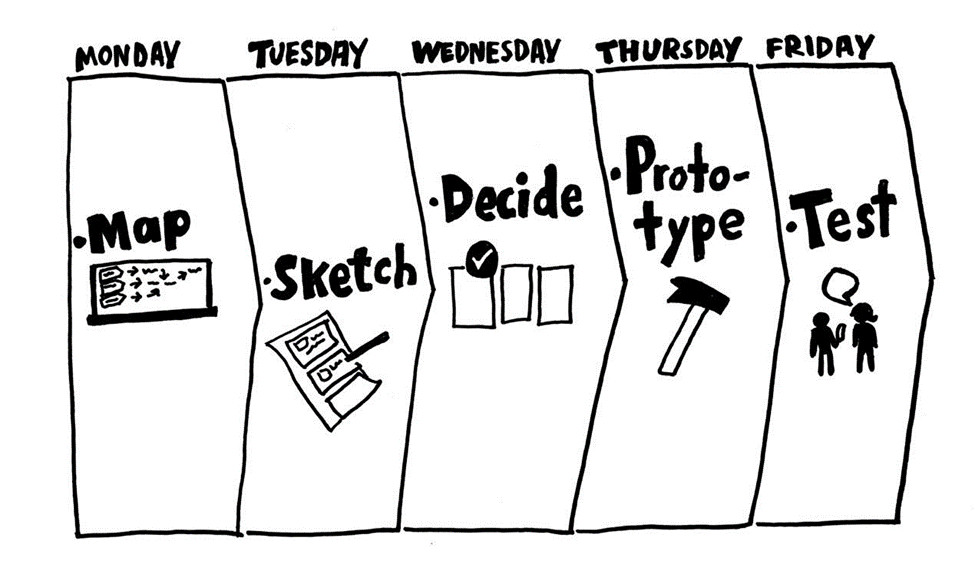Chinese consumer electronics company Honor is set to unveil its latest lineup of smart devices for the South African market. How about we forecast…
Can design sprints be done remotely?

The biggest factor that makes design sprints as efficient as they are, is being able to get that dream team of yours inside a room for four to five days. That’s where the magic happens.
So, is it possible to get the same results without real sticky notes, the smell of whiteboard markers and the close proximity of your peers? There are a few things to consider.
First, let’s recap
A design sprint is a time-constrained, five-day process that uses design thinking with the aim of reducing the risk when launching a new product, service or a product feature to the market.
Design sprints, developed by Google, are a way to solve design problems — and quickly. In just a few days critical business questions can be mapped out, prototyped and tested with users.
Design sprints also offer a cost-effective way to validate new ideas before implementation and development.
The schedule of a standard design sprint works as follows:
- Day 1: Map out the problem
- Day 2: Sketch ideas
- Day 3: Turn ideas and solutions into a hypothesis
- Day 4: Prototype
- Day 5: Test with users
At the Delta Studio, we do it a bit differently and plan our design sprints for four-day periods instead of the standard five days.
Why do a remote design sprint?
Although ideally, you want to lock your team of experts in a room for a workweek, that’s not always possible.
It might be that your team members are scattered globally and you don’t have the budget to fly them all down to your neck of the woods. Or maybe your UX design expert has come down with the mumps, but you can’t afford not to have his input.
These are some of the reasons that might lead to you to consider remote design sprints.
With an international team, you have some time to plan a remote design sprint, but with something like a sudden illness, it’s a different story completely.
That’s why it’s good to have a remote design sprint plan on the back-burner, even though you are planning to do a normal design sprint.
The challenges of remote design sprints
Here are some factors that could hinder the efficacy of your design sprints when done remotely:
Communication problems
Probably, the biggest problem with remote meetings or conference video calls is that people tend to talk over each other. This can be caused by time lags, low-quality audio or just a general lack of eye contact.
Simultaneous talking isn’t just a massive time-waster. It has the potential of rendering your design sprints completely ineffective and can leave team members agitated and demotivated.
This is why the facilitator’s role is extra important (and extra challenging) with remote design sprints.
The facilitator will have to develop a system to queue team members and manage low-quality interactions.
Multiple time zones
This will only be a problem if you’re running your remote design sprint with a globally distributed team. It will also be your first step in determining how feasible a remote design sprint will be for you.
Depending on how scattered your team is, remote design sprints might not be a realistic option. If your time zones are too far apart, someone will have to take one for the team and burn the midnight oil. Something which is easier said than done.
Lower engagement from the team
Sitting and working in a room on your own has its benefits, but it’s also a great way to get distracted. For example, it’s easier to quickly slip out for another meeting when you’re working remotely than it is when you’re “locked” in a room with your team members.
This also comes back to the facilitator. It’s their job to make sure all team members are taking part sufficiently and to find out what the problem is (and find a solution) if they’re not.
That being said, this shouldn’t be a problem if you picked the right team members from the start. If you’ve got the right, invested experts in your team, they’ll make sure that their ideas are heard.
Preparing for a remote design sprint
Before running a remote design sprint, you have to schedule a prep meeting.
In the case of globally distributed teams, this also acts as an exercise to see if you can communicate effectively remotely. So, it’s a good thing to carry out the meeting with all the team members present, wherever they might be.
To get the most out of your design sprint, there are a few things each team member will need for their remote design sprint “studios’. Here’s a checklist:
- A good quality camera. Built-in laptop cameras aren’t always the greatest. So make sure you have a camera that’s optimised for indoor lighting conditions.
- A good quality microphone. Remember, your microphone is your voice and by using a subpar microphone, you’ll hamper your ability to effectively participate in the design sprint and communicate your ideas. In short, you might be talked over by your teammates if you have low-quality audio.
- Dual monitors for all those tools and apps you’ll be using. You don’t want to keep switching between camera, app and browser windows all the time.
- A silent room to work from. A desk or cubicle in the middle of the office is not going to work for this.
- A good (nay great) uncapped internet connection. You’re gonna make that puppy work.
- Enough wall space to put up stickies and sketches. Even though you’re doing a digital, remote design sprint, you’ll still be doing it old skool in your studio.
- Natural light. This isn’t always possible. Especially with the challenges of finding an empty room at your office. Or finding a slot in the daytime with a globally distributed team. But natural light will help your team see your face, sticky notes and sketches and will ultimately help you communicate your ideas.
Some tools you’ll need to work remotely, effectively:
- Slack: For chatting and sharing files
- Mural : For sticky notes and voting on ideas
- Figma: For designs and prototyping
- Zoom: For video conferencing
A remote design sprint has its advantages
When planned well and all the challenges are considered beforehand, remote design sprints come with some advantages.
Even with this guide, remote design sprints are trial and error, and it might take a few misfires to get it perfect. But when you get it right, you’ll be able to upscale and work with the best people from around the world at a fraction of the cost of normal design sprints.
We recommend Sprint by Jake Knapp, John Zeratsky and Braden Knwitz as a great resource which helps you arm your business in design thinking.
Featured image: Supplied
Company Office is a subscription-based press office service.



